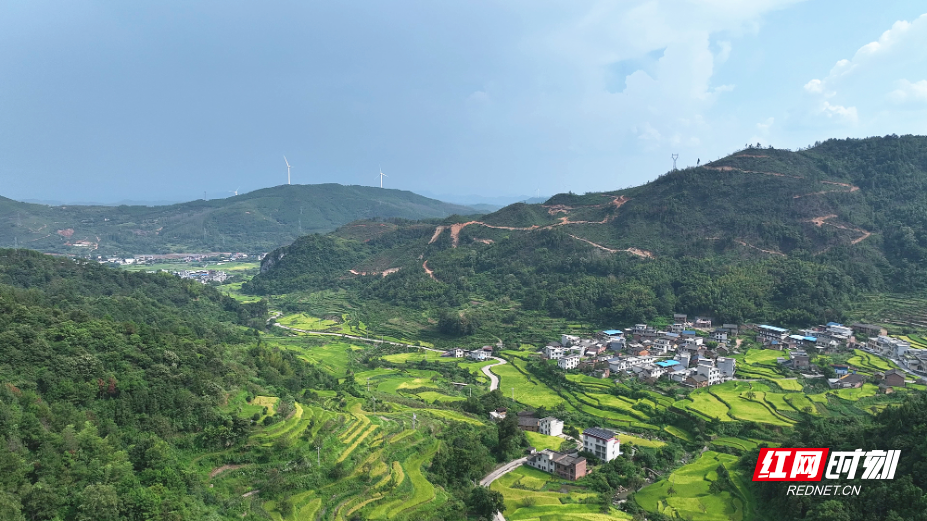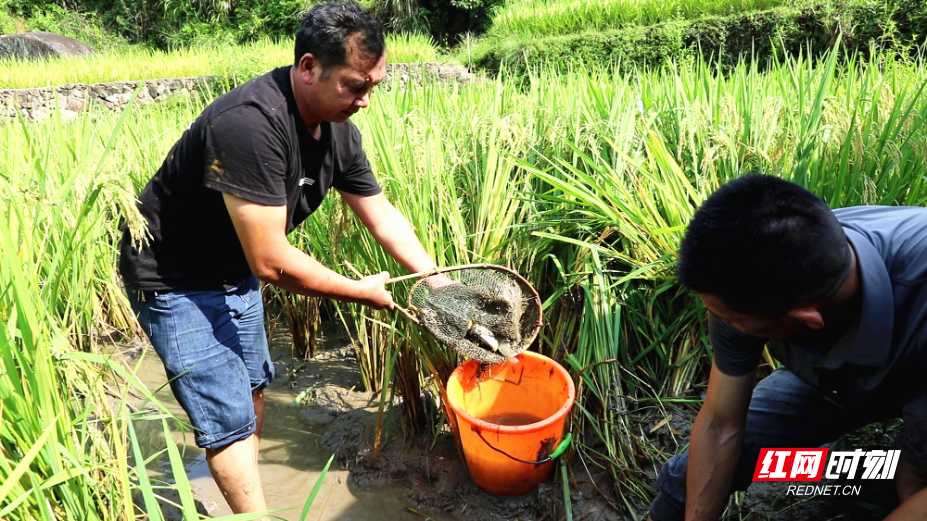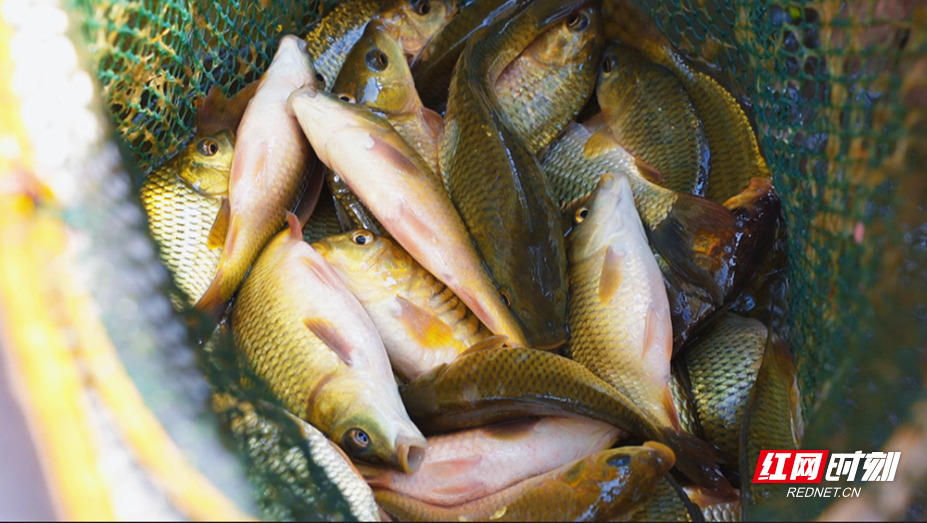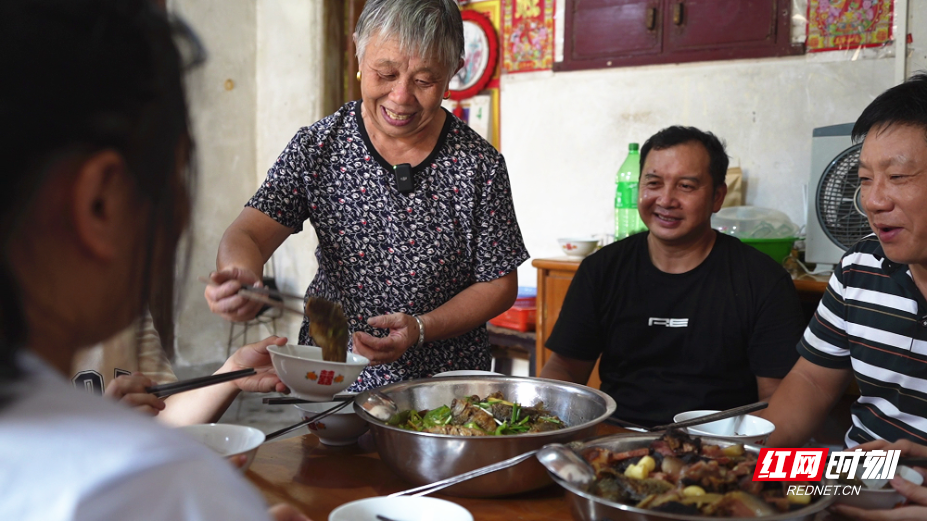Tanshan Village sees bumper harvest of rice and fish
2024-09-14
In early autumn, villagers dug trenches in the terraced fields at Tanshan Village of Wuling Town, Yizhang County. As the water in the fields was drained away, plump Hehua fish were seen. Everyone then rolled up their pants to catch fish.

Tanshan Village, located at an altitude of about 800 meters, with beautiful mountains, clear waters, and pleasant climate, is shrouded in mist and clouds all year round. It has a long history of fish farming in paddy fields. Relying on the favorable natural environment, after transplanting rice seedlings, villagers place fish in the paddies, which are irrigated with running mountain spring water. The fish grow up after more than three months.
Compared to traditional rice cultivation, fish farming in paddy fields has a virtuous cycle ecosystem with double harvesting. The cultivation of Hehua fish can improve the quality of rice and enhance the added value of rice cultivation, opening up a new channel for villagers to increase their income.

During the harvest season, villagers taste the seasonal dishes to feel the joy of harvest. Hehua fish are usually made into stewed fish with loofah and steamed fish with preserved meat in the local area. They are stir-fried over low heat until they turn yellow, then stewed with loofah. In less than an hour, the soup is as white as milk, and the fish meat is as fresh and tender as tofu.

In recent years, based on its ecological resources, Tanshan Village has continued efforts to adjust its agricultural industry structure and promote high-quality characteristic agricultural products such as Tanshan Hehua Fish, Tanshan Lengshui Rice, and Tanshan Radish, in a bid to increase grain yield, farmers’ income, and industrial efficiency.

At present, the village has developed more than 900 mu (60 hectares) of paddies for the cultivation of Hehua fish, with an annual output of over 4,500 kilograms of Hehua fish and an annual output value of over 400,000 yuan, driving an average annual income increase of over 2,000 yuan per household.
Chinese source: rednet




